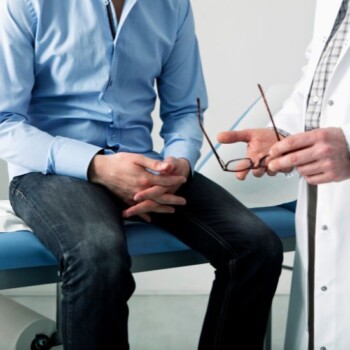Article Summary
The article discusses the importance of customizing growth hormone therapy to individual patient needs, considering factors like age, genetics, and response to treatment. Tailoring treatment to age and genetic profiling for personalized therapy are highlighted, along with the evolution of dosing strategies. Individualized treatment strategies aim to maximize the benefits and results of growth hormone therapy, providing personalized care for each patient.Customizing Growth Hormone Therapy
One size doesn’t fit all. Such is the case when it comes to most patient-centered, integrative therapies. Growth hormone (GH) therapy, for one, aims to significantly improve patient outcomes while revolutionizing the treatment of growth abnormalities and GH deficiency. A universal, one-size-fits-all method of treatment would not be best. Numerous studies have emphasized the importance of using personalized treatment plans while administering GH medication. [1][2][3][4] Clinicians can optimize the advantages for each patient by customizing treatment depending on variables like age, gender, genetic profile, and response to medication. The significance of personalized treatment strategies in GH therapy is examined in this article, which also illuminates the results of several investigations.
1. Tailoring Treatment to Age
Age has a significant impact on how well GH therapy works. In the case of Turner Syndrome, for example, while older adults may have reduced dose requirements, younger children with GH deficiency typically need higher doses to reach the proper development velocity. This is shown in an examination of the role GH plays within Turner Syndrome and girls who start treatment at various ages, in addition to measuring outcomes with other patients experiencing GH deficiency.[1]
2. Genetic Profiling for Personalized Therapy
GH deficiencies can occur because of genetic defects. Even though testing may reveal a congenital defect, they are often considered to be unnecessary after a diagnosis of GHD has been reached; they have no influence on the course of treatment. However, as GH levels may return to normal after reaching maturity, it is pertinent for patients to be retested for GHD when they go from pediatric to adult treatment.[2]
3. The Evolution of Dosing
Monitoring the response to GH therapy is crucial for tailoring treatment. Adjusting the dose and frequency of injections based on individual responses can maximize the benefits of therapy. In 1983, Kastrup et al introduced daily injections. Current guidelines for rhGH dosing in children and adults, with GHD, are weight-based or body surface-based at the start of treatment, with subsequent adjustments based on clinical response. Monitoring of serum IGF-I levels is used to ensure treatment compliance and safety.[5]
Since they have the potential to maximize the advantages and results of GH therapy, individualized treatment strategies have attracted a lot of attention. Clinicians can fine-tune the dosage and frequency of GH administration by basing treatment on variables such as age, gender, genetic profile, and response to therapy, assuring optimal growth responses in each patient. Clinicians can offer personalized care that maximizes the advantages of GH therapy.
- Ramos AV, Silva IN, Goulart EM. Turner syndrome: searching for better outcomes. Clinics (Sao Paulo). 2008 Apr;63(2):173-8. doi: 10.1590/s1807-59322008000200004. PMID: 18438570; PMCID: PMC2664211. Or https://www.ncbi.nlm.nih.gov/pmc/articles/PMC2664211/
- National Organization for Rare Disorders. (2016, September 9). Growth Hormone Deficiency. rarediseases.org. https://rarediseases.org/rare-diseases/growth-hormone-deficiency/
- Grimberg A, Stewart E, Wajnrajch MP. Gender of pediatric recombinant human growth hormone recipients in the United States and globally. J Clin Endocrinol Metab. 2008 Jun;93(6):2050-6. doi: 10.1210/jc.2007-2617. Epub 2008 Mar 11. PMID: 18334582; PMCID: PMC2435638. Or https://www.ncbi.nlm.nih.gov/pmc/articles/PMC2435638/
- Dongye He, Yanying Li, Wanling Yang, Shuxiong Chen, Hailing Sun, Ping Li, Mei Zhang, Bo Ban. Molecular diagnosis for growth hormone deficiency in Chinese children and adolescents and evaluation of impact of rare genetic variants on treatment efficacy of growth hormone. Clinica Chimica Acta. Volume 524. 2022. 1-10. ISSN 0009-8981. https://doi.org/10.1016/j.cca.2021.11.021. Or https://www.sciencedirect.com/science/article/pii/S0009898121004046
- National Organization for Rare Disorders. (2016, September 9). Growth Hormone Deficiency. rarediseases.org. https://rarediseases.org/rare-diseases/growth-hormone-deficiency/




